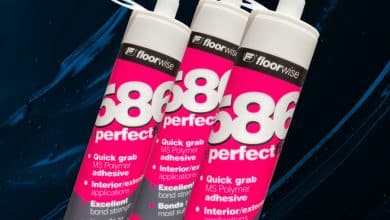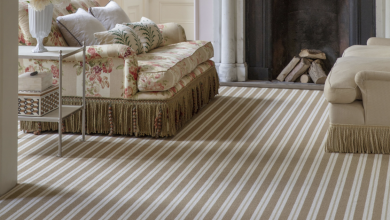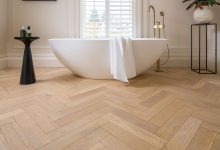Are you at risk, what you can do?
Without sensible safeguards, you will be at risk of a slip or trip. And it’s not necessarily that you have to be doing anything out of the ordinary either to be at risk. The activities causing over 60% of all accidents are: walking or running on premises or outside (not including car parks and sports activities), teaching activities (in the classroom, workshop, lab etc.) and climbing/descending up/from equipment (e.g. vehicles, stairs). But slips and trips can be prevented as long as everyone plays their part, as outlined below.
- Health and safety managers and representatives
- Head teachers, teachers, teaching assistants, lecturers, office staff and school secretaries
- Catering and Kitchen Staff
- Cleaners & Caretakers
- Facilities managers, Procurers, PFI providers, Business Managers
Health and safety managers and representatives
– Assess slip and trip risks inside and outside of buildings and take action
- Causes of slips and trips
- Prevention of slips and trips
- ResourcesGuidance
- Checklist
– Educate others in how to prevent slips and trips
- Case studies
- Presentations
- Newsletter
– Attend a workshop to gain a fuller understanding of problem
- Workshops & Diary
Head teachers, teachers, teaching assistants, lecturers, office staff and school secretaries
– Take responsibility
- Small spills on smooth floors are a slip hazard e.g. if you spill coffee on the floor/in the corridor don’t just leave it, clean it up to leave floor dry.
– Report problems straight away to the right person
- e.g. leaks, spills, food debris, bad lighting, obstacles in walkways, uneven flooring and potholes.
- Put out cones on visible hazards
– Wear the right shoes
- You are less likely to have a slip or trip accident if you wear sensible shoes.
– Use designated walkways, don’t use shortcutsEncourage students to follow same procedures
- Don’t block walkways
- Store bags and work equipment safely
- Avoid trailing wires
Catering and Kitchen Staff
– Prevent contamination from getting onto the floor
- Avoid clearing food waste from the work surface onto the floor
- Before moving trays and baskets, shake off drips or leave to drain.
– Clean up spills straight away
- For small spills spot clean with self absorbent paper
– Deep clean at the end of each day
- Use the right cleaning method for the floor
- Use the right cleaning product in the right quantity
– Stop people from walking on smooth wet floors
- Dry the floor after cleaning to reduce drying time
- Barrier off or close off the wet area
– Wear the right shoesReport flooring problems
- The right non slip footwear can significantly lower the risk of slips in kitchens
For more information read:
- Preventing slips and trips in kitchens and food service Catering Information Sheet
- Slips and trips: The importance of floor cleaning
Cleaners & Caretakers
– Follow your floor-cleaning and floor equipment instructions
– Clean up spills straight away
- For small spills spot clean with some absorbent paper
- Use a cone to highlight the spill until it is removed
– Deep clean at the end of each day
- Use the right cleaning method for the floor
- Use the right cleaning product in the right quantity
– Stop people from walking on smooth wet floors
- Dry the floor after cleaning to reduce drying time
- Barrier off or close off the wet area
- Remove cones as soon as the floor is dry
– Don’t create new hazards when you cleanReport maintenance issues – floors and cleaning equipment
- Trailing wires from vacuum cleaners are a trip hazard
- Bin bags in walkways are a trip hazard
For more information read:
Facilities managers, Procurers, PFI providers, Business Managers
– Get the design right
- Provide designated walkways in the right place
- Prevent rainwater etc. from entering the building e.g. Canopies over doorways leading outside, better entrance matting
- Provide sufficient storage facilities
– Fit the right floor & keep it maintained
- Non slip floors needed for foreseeably wet or greasy areas
- Keep floors level and free from holes and other trip hazards
- For more information refer to-Assessing the slip resistance of flooring
– Put in the right floor cleaning systemProvide the right cleaning equipment in the right place. Stops cleaners using shortcuts
- Spot cleaning is better for small spills
- Different floors need different cleaning systems e.g. a nylon brush works better than a mop on non slip floors
- Ensure it is carried out at the right time of day
- Ensure cleaning systems do not create new hazards e.g. keep people off smooth wet floors
– Check cleaning and maintenance procedures are being followedSupply sufficient rubbish bins
- Cleaners given appropriate training
- Supervision ensures procedures are followed
- For more information – http://www.hse.gov.uk/slips/causes.htm and Slips and trips: The importance of floor cleaning [PDF 60kb]

– Attend workshop to gain a fuller understanding of problem
- Workshops & Diary
Source: Office for National Statistics licensed under the Open Government Licence v.1.0.






